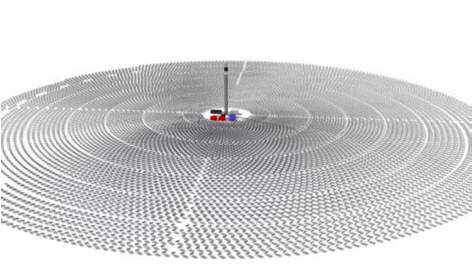Alinta Energy – the owner of two ageing coal fired generators in Port Augusta, South Australia, says its latest studies suggest that solar thermal generation is still too expensive to consider as a replacement plant.
Alinta issued a statement on Wednesday that said a “robust” investigation into specific technology and site options had found that “even under optimistic capital cost and operating cost assumptions there is a significant funding gap preventing solar thermal generation from being economically viable at this time.”
This is despite its new report suggesting that the total costs of a 50MW solar thermal plant with 15 hours storage would be $21o million cheaper than previously thought, now at $577 million.
However, this was still not cheap enough.
“Even under the best plausible capital cost assumptions, construction and operation of a CSP plant as currently costed and designed would have an un-geared Internal Rate of Return of 7%,” it wrote.
“Once debt financing and minimum commercial returns are considered, even this optimistic scenario is well outside of the bounds of a commercially attractive investment.”
If the costs could be reduced by 30 per cent, or capital costs of $403.9 million, it would still fall short. At current levels, it is well beyond the money it could recover from the electricity market.
Alinta has been under pressure from local groups and environmental NGOs to close both the Playford and the Northern brown coal generator, and replace them with solar thermal technology. Solar towers with storage, such as those being built in Nevada by Solar Reserve, and in Australia by Vast Solar, have been suggested as possibilities.
However, Alinta says the current indications are that the technology is not yet viable. However, it will investigate the matter further, before finalising stage 1 of a feasibility study co-funded by the Australian Renewable Energy Agency.
It said these studies will also investigate emerging “solar thermal technologies that may be commercial in the near term.” It expects the final report to be released mid this year. Alinta is currently undergoing a sales process from its private equity owners.
Alinta Energy will be holding a Stakeholder Briefing session on the Draft Balance of Study Report in Port Augusta in late April. T










